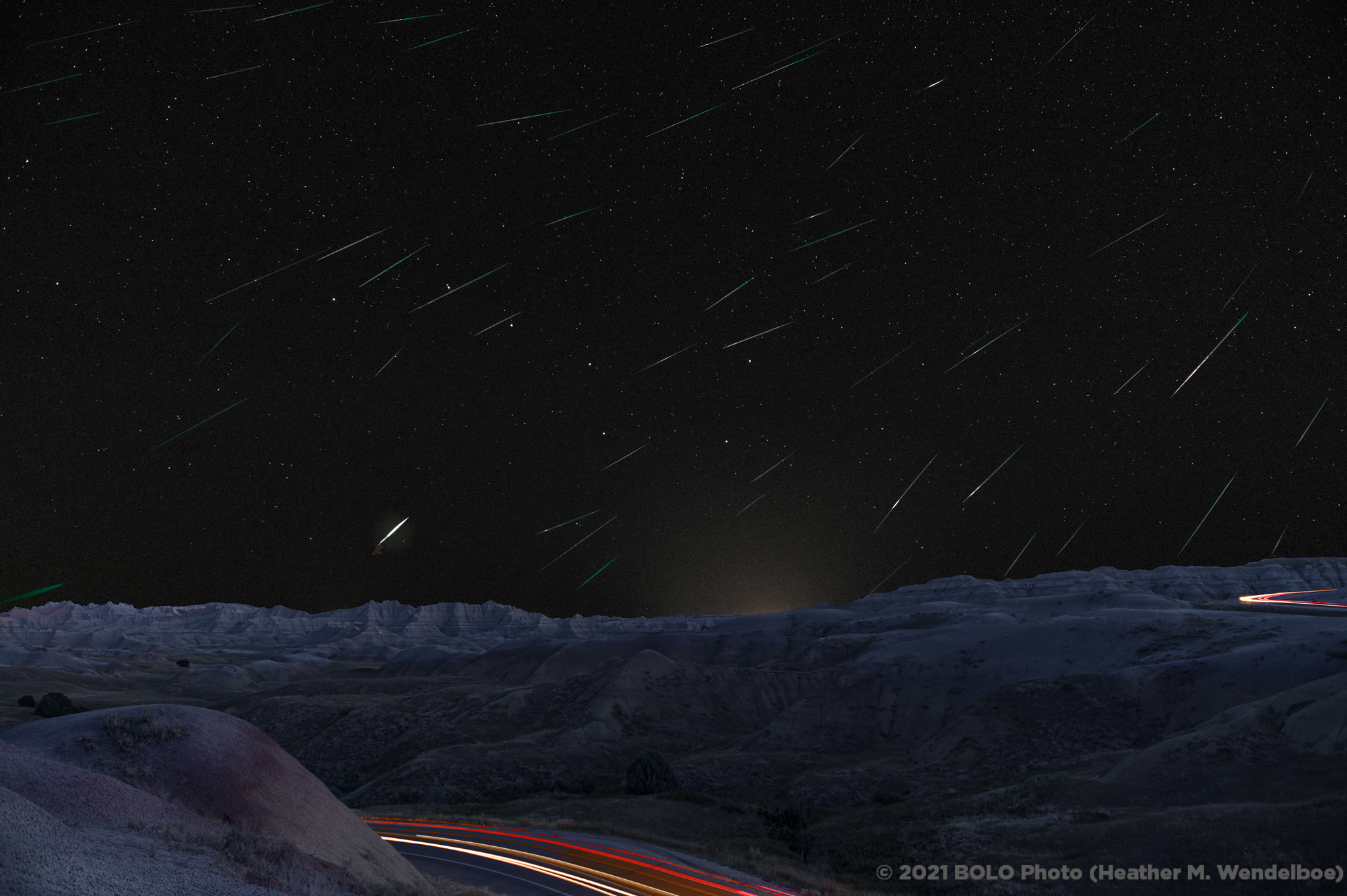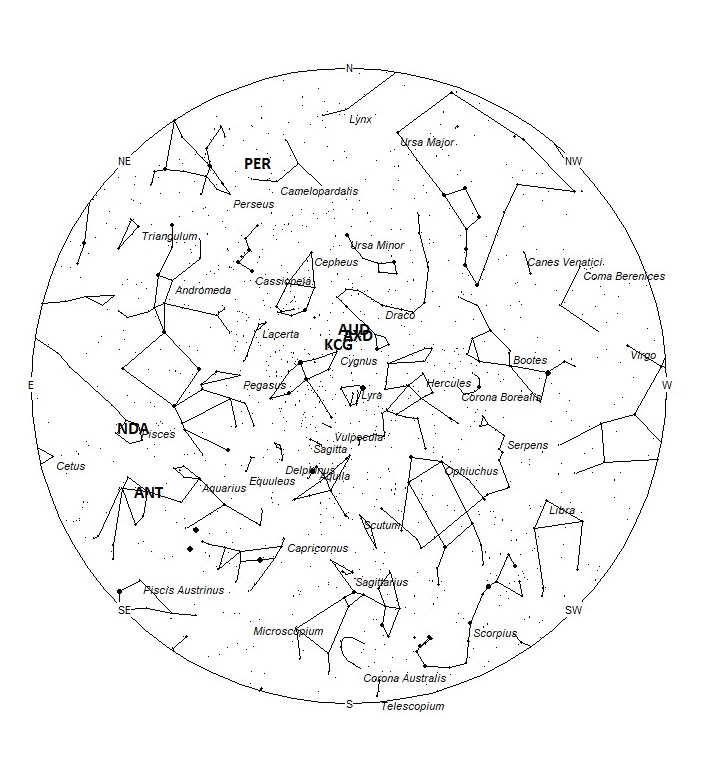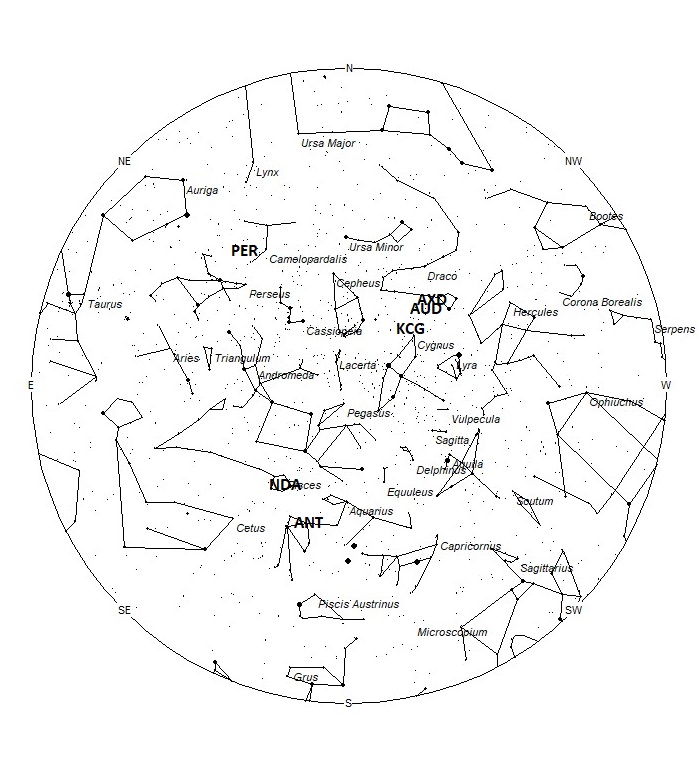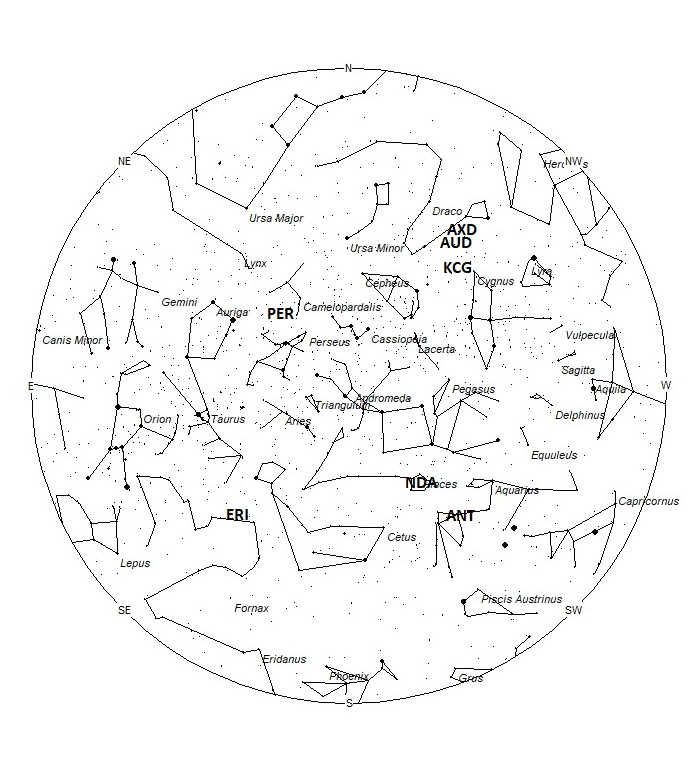
During this period, the moon reaches its full phase on Sunday August 22nd. At that time the moon lies opposite the sun and remains above the horizon all night long. This is the worst time of the month to try and view meteor activity as the bright moon will obscure all but the brightest meteors. Later in the week there will be a short opportunity to view between dusk and moon rise, but meteor activity during this time is low. The estimated total hourly meteor rates for evening observers this week is near 2 as seen from mid-northern latitudes (45N) and 1 as seen from tropical southern locations (25S). For morning observers, the estimated total hourly rates should be near 10 as seen from mid-northern latitudes (45N) and 6 as seen from tropical southern locations (25S). The actual rates will also depend on factors such as personal light and motion perception, local weather conditions, alertness, and experience in watching meteor activity. Rates are reduced this week due to interfering moonlight. Note that the hourly rates listed below are estimates as viewed from dark sky sites away from urban light sources. Observers viewing from urban areas will see less activity as only the brighter meteors will be visible from such locations.
The radiant (the area of the sky where meteors appear to shoot from) positions and rates listed below are exact for Saturday night/Sunday morning August 21/22. These positions do not change greatly day to day so the listed coordinates may be used during this entire period. Most star atlases (available at science stores and planetariums) will provide maps with grid lines of the celestial coordinates so that you may find out exactly where these positions are located in the sky. I have also included charts of the sky that display the radiant positions for evening, midnight, and morning. The center of each chart is the sky directly overhead at the appropriate hour. These charts are oriented for facing south but can be used for any direction by rotating the charts to the desired direction. A planisphere or computer planetarium program is also useful in showing the sky at any time of night on any date of the year. Activity from each radiant is best seen when it is positioned highest in the sky, either due north or south along the meridian, depending on your latitude. It must be remembered that meteor activity is rarely seen at the radiant position. Rather they shoot outwards from the radiant, so it is best to center your field of view so that the radiant lies at the edge and not the center. Viewing there will allow you to easily trace the path of each meteor back to the radiant (if it is a shower member) or in another direction if it is sporadic. Meteor activity is not seen from radiants that are located far below the horizon. The positions below are listed in a west to east manner in order of right ascension (celestial longitude). The positions listed first are located further west therefore are accessible earlier in the night while those listed further down the list rise later in the night.
These sources of meteoric activity are expected to be active this week.
Details on each source will continue next week when viewing conditions are more favorable.
|
SHOWER |
DATE OF MAXIMUM ACTIVITY | CELESTIAL POSITION | ENTRY VELOCITY | CULMINATION | HOURLY RATE | CLASS |
| RA (RA in Deg.) DEC | Km/Sec | Local Daylight Saving Time | North-South | |||
| August xi Draconids (AXD) | Aug 14 | 18:02 (271) +61 | 21 | 22:00 | <1 – <1 | IV |
| zeta Draconids (AUD) | Aug 26 | 18:05 (271) +62 | 22 | 23:00 | <1 – <1 | IV |
| kappa Cygnids (KCG) | Aug 13 | 19:20 (290) +57 | 24 | 23:00 | <1 – <1 | II |
| Anthelion (ANT) | – | 22:48 (342) -08 | 30 | 02:00 | 1 – 1 | II |
| August beta Piscids (NDA) | Aug 21 | 23:34 (353) +05 | 38 | 03:00 | <1 – <1 | IV |
| August gamma Cepheids (AGC) | Aug 29 | 23:49 (357) +75 | 43 | 03:00 | <1 – <1 | IV |
| eta Eridanids (ERI) | Aug 06 | 03:15 (054) -08 | 64 | 07:00 | 1 – 1 | II |
| Perseids (PER) | Aug 13 | 04:06 (062) +60 | 59 | 07:00 | 2 – <1 | I |
 American Meteor Society
American Meteor Society


